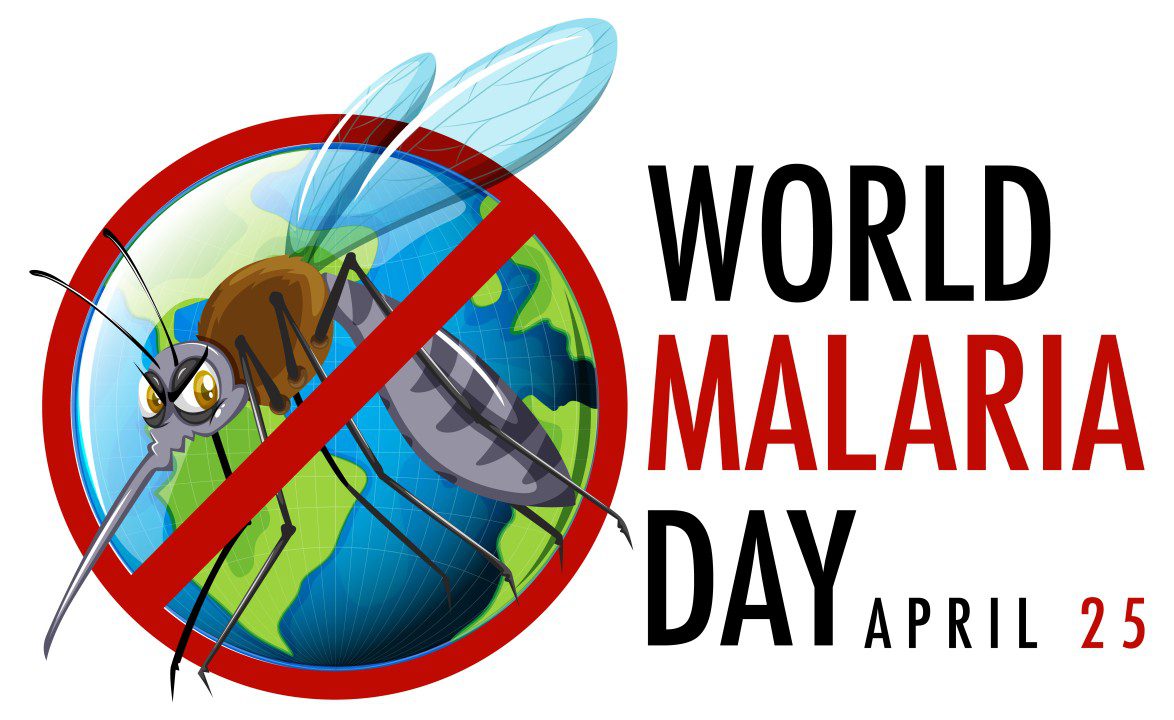Search by Color or Cause


April 25 is World Malaria Day. World Malaria Day is an occasion to highlight the need for continued investment and sustained political commitment for malaria prevention and control. It was instituted by WHO Member States during the World Health Assembly of 2007. Wear blue to raise awareness for World Malaria Day. We offer blue enamel awareness pins, blue fabric ribbons, and blue wristbands.
Malaria is a life-threatening disease spread to humans by some types of mosquitoes. It is mostly found in tropical countries. It is preventable and curable. The infection is caused by a parasite and does not spread from person to person.
For example, symptoms can be mild or life-threatening. Mild symptoms are fever, chills and headache. Severe symptoms include fatigue, confusion, seizures, and difficulty breathing. Infants, children under 5 years, pregnant women, travelers and people with HIV or AIDS are at higher risk of severe infection. Malaria can be prevented by avoiding mosquito bites and with medicines. Treatments can stop mild cases from getting worse.
In addition, malaria mostly spreads to people through the bites of some infected female Anopheles mosquitoes. Blood transfusion and contaminated needles may also transmit malaria. The first symptoms may be mild, similar to many febrile illnesses, and difficulty to recognize as malaria. Left untreated, P. falciparum malaria can progress to severe illness and death within 24 hours.
Lastly, there are 5 Plasmodium parasite species that cause malaria in humans and 2 of these species – P. falciparum and P. vivax – pose the greatest threat. P. falciparum is the deadliest malaria parasite and the most prevalent on the African continent. P. vivax is the dominant malaria parasite in most countries outside of sub-Saharan Africa. The other malaria species which can infect humans are P. malariae, P. ovale and P. knowlesi.
The most common early symptoms of malaria are fever, headache and chills. Symptoms usually start within 10–15 days of getting bitten by an infected mosquito. Symptoms may be mild for some people, especially for those who have had a malaria infection before. Because some malaria symptoms are not specific, getting tested early is important.
As a result, some types of malaria can cause severe illness and death. Infants, children under 5 years, pregnant women, travelers and people with HIV or AIDS are at higher risk.
People with severe symptoms should get emergency care right away. Getting treatment early for mild malaria can stop the infection from becoming severe. Malaria infection during pregnancy can also cause premature delivery or delivery of a baby with low birth weight.
According to the latest World Malaria Report, there were 249 million cases of malaria in 2022 compared to 244 million cases in 2021. The estimated number of malaria deaths stood at 608,000 in 2022 compared to 610,000 in 2021.
The WHO African Region continues to carry a disproportionately high share of the global malaria burden. In 2022 the Region was home to about 94% of all malaria cases and 95% of deaths. Children under 5 years of age accounted for about 78% of all malaria deaths in the Region.
Four African countries accounted for just over half of all malaria deaths worldwide: Nigeria (26.8%), the Democratic Republic of the Congo (12.3%), Uganda (5.1%) and Mozambique (4.2%).
Early diagnosis and treatment of malaria reduces disease, prevents deaths and contributes to reducing transmission. Malaria is a serious infection and always requires treatment with medicine.
Multiple medicines are used to prevent and treat malaria. Doctors will choose one or more based on:
In 2022, 34 countries reported fewer than 1,000 indigenous cases of the disease, up from just 13 countries in 2000. Countries that have achieved at least 3 consecutive years of zero indigenous cases of malaria are eligible to apply for the WHO Certification of Malaria Elimination. Since 2015, 12 countries have been certified by the WHO Director-General as malaria-free, including Maldives (2015), Sri Lanka (2016), Kyrgyzstan (2016), Paraguay (2018), Uzbekistan (2018), Argentina (2019), Algeria (2019), China (2021), El Salvador (2021), Azerbaijan (2023), Tajikistan (2023) and Belize (2023).
Malaria surveillance is the continuous and systematic collection, analysis and interpretation of malaria-related data, and the use of that data in the planning, implementation and evaluation of public health practice. Improved surveillance of malaria cases and deaths helps ministries of health determine which areas or population groups are most affected and enables countries to monitor changing disease patterns. Strong malaria surveillance systems also help countries design effective health interventions and evaluate the impact of their malaria control programs.
The WHO Global Technical Strategy for Malaria 2016–2030, updated in 2021, provides a technical framework for all malaria-endemic countries.
The strategy sets ambitious but achievable global targets, including:
Guided by this strategy, the Global Malaria Program coordinates the WHO’s global efforts to control and eliminate malaria by: